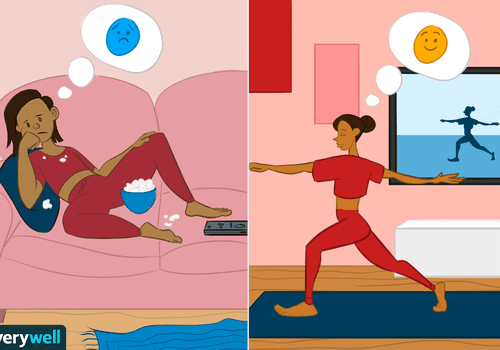
Sutra Yoga's essence is its emphasis upon 'nonduality and nonduality of consciousness. Sutra Yoga identifies three categories of human consciousness: Purusha Prakriti, Kaivalya and Prakriti. The first category is referred to as 'unceasing vision of discernment.' The next category is "nonduality". This category comprises both the internal and external nature of the individual.
Purusha
In sutra yoga, the purusha (god) is called Ishwara and is the one who is separate from the five afflictions, three kinds of actions, and seeds of karmas. We live in both favourable and negative circumstances throughout our lives and accumulate new traces from past actions. These tendencies must be reversed if we want to break the cycle of our birth.

Prakriti
Prakriti in Sutra yoga is the reflected consciousness the Purusha. The individual's mind is a monad that resides within the prakriti. Prakriti, the source of all things, including the mind and body, is the source of all that is possible. This life monad represents the three Gunas. The first Guna (or quality) is karma; the last Guna (or quality) is dharma.
Kaivalya
The aim of Raja Yoga is to bring individual souls to kaivalyam, a state of ultimate enlightenment. During this process, Patanjali enlightens individual souls about the true nature of Shiva and enables them to undergo radical transformations. Higher consciousness replaces the ordinary human nature that is driven by the natural forces. During this process, the human mind reels with the immense Reality.
Unceasing vision of discernment
Yoga refers to an unceasing vision of discernment. It purifies the sevenfolds of impurity, and brings light to true knowledge. This is the culmination all restraints, observances and posture. It also includes sense withdrawal, sense withdrawal, sense withdrawal, and breath control. Sevenfold manifestations of prajna are possible in the final stage.
Vairagya
The stages of Vairagya are well-described in the yoga sutras. Vairagya can be promoted by being still and silent. The yoga sutras provide guidance for practitioners on how to apply their yoga knowledge into real life situations. They must carry the lessons from the yoga sutras. It is essential that students practice yoga with an open mind, so they can reap the benefits from life's experience and knowledge.

Asana
Sutra Yoga asana (or a set postures) is taught in Hinduism. It combines both the ease and effort. Asanas, in addition to being very relaxing, allow the practitioner achieve deep meditation. Even though asanas may be hard to perform, a yoga practitioner should do them with "angry determination".
FAQ
What are some of the best yoga mats available?
There are several types of yoga mats available. You can pick one based on price, size, and endurance.
A high-quality mat will be thick enough for protection, but thin enough to be easily moved.
A cheap mat may not provide adequate support.
Do I need any special equipment to practice yoga?
You don't need any special equipment to practice yoga. You may prefer to use specific props like blocks, straps, or blankets.
You can find our Yoga Equipment Guide here if you're looking for these items. We prefer to use natural materials instead of plastic.
What are the differences between Hatha and Ashtanga, Vinyasa Power Yoga, Power Yogas, Kripalu, Bikram, Power Yogas, Vinyasa and Power Yogas? ?
There are many types of Yoga. Each one offers a different way to find balance in our lives.
Some of the most sought-after forms of yoga are:
Hatha: This involves stretching out and focusing on core strength and flexibility.
Ashtanga: This practice focuses on slow-paced movements to build strength and stamina.
Vinyasa-This type of yoga combines fast-flowing sequences which allow you to breath deeply.
Power – A form of power-yoga that features more difficult moves.
Kripla - One of the oldest forms and traditions of yoga, Kripla dates back thousands of year.
Bikram: This form of yoga is done in heated rooms.
Who would benefit most from yoga?
Yoga's target market is anyone who wants to have a better quality life through improved health and fitness. People who wish to improve their posture, flexibility, and balance.
They may also be interested in losing weight or gaining muscle mass. They might also be interested reducing stress and anxiety to achieve peace of head.
Some disabilities are: arthritis, back issues, diabetes heart disease, high bloodpressure, insomnia, migraines and obesity. Yoga is especially beneficial for these individuals.
What research shows about yoga as a way to improve your health?
Yoga has been shown effective in improving mental health, stress reduction, and overall well-being. It helps people lose weight as well as maintain a healthy body Mass Index (BMI).
Yoga can help lower blood pressure, improve cardiovascular function and boost immunity.
These are only a few of the many benefits that yoga can bring.
You could go on and on.
Do I need to warm up before doing yoga?
No. It doesn't matter if you are warming up before starting a yoga class.
Stretching your muscles before you exercise can help to loosen stiff muscles.
Statistics
- In comparison, a 125-pound person is estimated to burn 135 calories in 30 minutes of walking (at a pace of 15-minute miles) and 210 calories bicycling at a moderate pace on a stationary bike. (everydayhealth.com)
- According to calorie estimates calculated at Harvard Medical School, the average 125-pound person burns about 120 calories in a half hour of hatha yoga, and a 185-pound person burns about 178 calories in that half hour. (everydayhealth.com)
- Lock in 25% off your Founding Member rate. (corepoweryoga.com)
- A 2020 review of 27 studies (1,805 total participants) of yoga interventions in children or adolescents found reductions in anxiety or depression in 70 percent of the studies, with more promising results for anxiety. (nccih.nih.gov)
- The American Psychological Association recently shared that 84% of American adults feel the impact of prolonged stress (5). (healthline.com)
External Links
How To
Which is the best place to do yoga?
There is no one right way to do yoga. Everybody is unique. You just need to identify which positions are most comfortable.
Here are some examples of common postures:
For beginners, standing poses are a good choice because you can see your body from various angles. It is also easier to focus on your breathing with these poses.
Forward bends – Forward bends can be used to loosen tight areas in the body. These can be done while you are sitting or lying down.
Backbends-Backbends are generally considered advanced poses. Ask your instructor for advice if you're interested in trying it.
Inversions - Inversions are poses that require you to balance yourself upside down. This is a challenging but rewarding type of yoga.